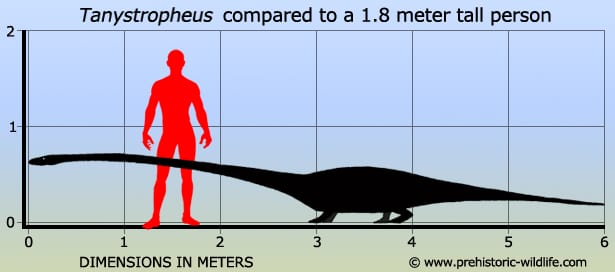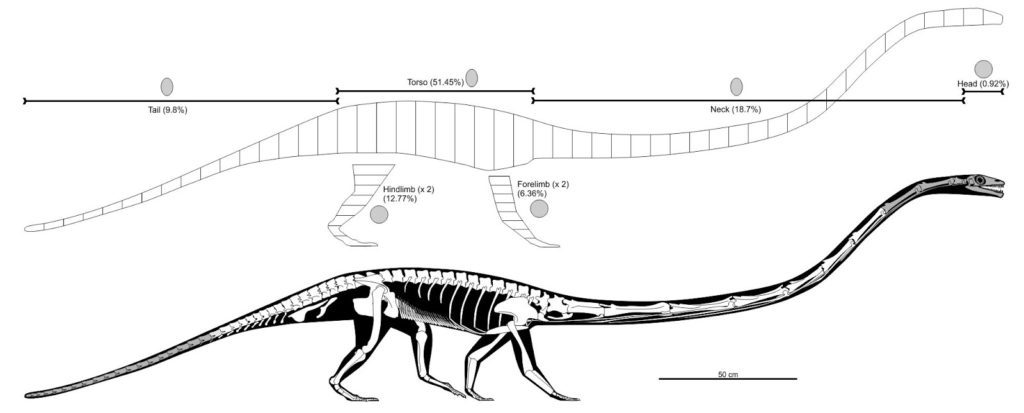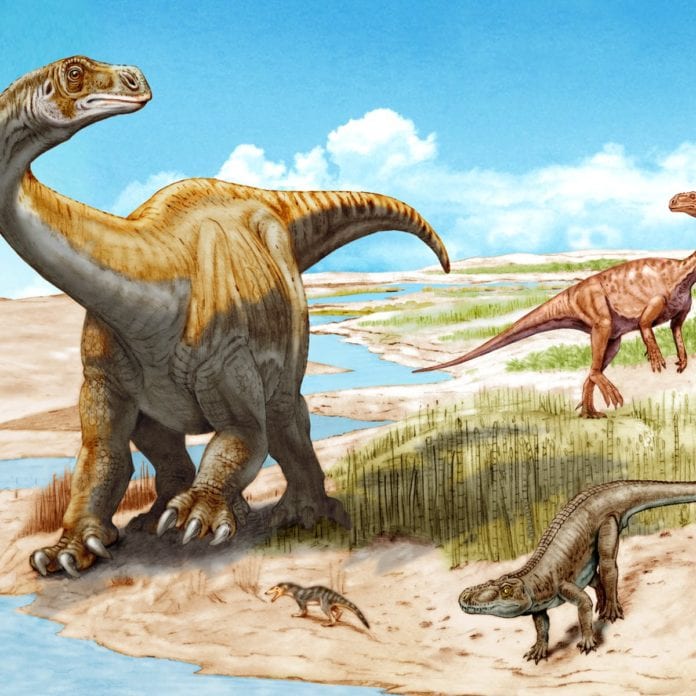Whenever people see a dinosaur fossil, they are struck with awe and wonder. Deservingly so, because these reptiles are a truly magnificent piece of Earth’s history and the remains that have survived till the modern times are a testament to this fact.
The large lumbering reptiles that once ruled the Earth now lie dormant in our museums with perhaps most of them, still underground, waiting to be uncovered by a curious human or maybe by accident. What we know today about the lifestyle of a prehistoric dinosaur is mostly derived from these fossils, and we are constantly uncovering new facts about these magnificent creatures.

In one such attempt, researchers seem to have solved another mystery regarding Tanystropheus, a long-necked dinosaur that lived about 242 million years ago. The researchers have concluded that these behemoths spent most of their time underwater, based on the evidence that they have gathered.
The long neck of this dino stands out like a sore thumb, with one look at its fossil. There was debate around the actual characteristics of the creature when it was first unearthed in Germany about 150 years ago. Several other specimens of the creature have turned up meanwhile.
The largest specimens of the dino were 6 meters in length. It had a tiny skull and tail and a long stiff neck. The neck was almost three times the length of its body. Regarded by many palaeontologists as the greatest reptile fossil to have ever been found, it speaks volumes about the conditions that these creatures lived in.
There was a consensus amongst researchers that the dinosaur lived around the coast. The disagreement was whether it spent most of its time on the sand filled beaches and land or whether it was off taking a swim in the sea in the vicinity.

The huge stiff neck of the creature gave it away. The researchers who thought it would have been an aquatic animal did so because it seemed almost impossible to manage such a long stiff neck on land. Other evidence includes the nose being on the top of the snout and the formation of the teeth, indicating that they were ideal for trapping fish.
Some fossils did have a flattened skull, which suggested that it was not an exclusively aquatic animal. However, on closer analysis, it was revealed that these other fossils were a different species of Tanystropheus. The division of these dinosaurs means that they were feeding on different things to minimize the conflict of interest.
Other features in the fossils have also revealed what they liked to eat as well. These discoveries are being brought at a time when the same genus, Tanystropheus, has been found in China. It is up to the researchers to determine what species those fossils belong to.
Further Reading:


